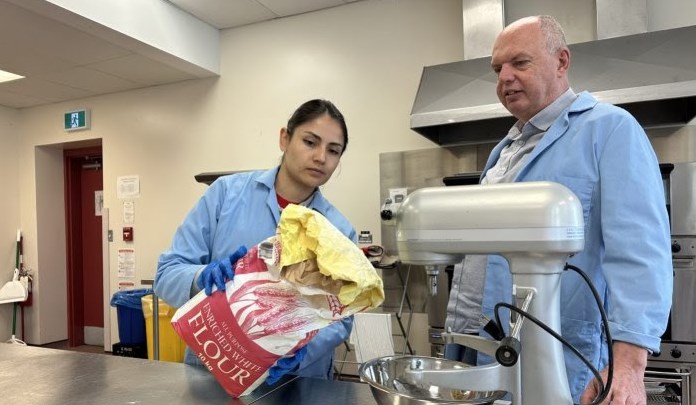Food scientists at the University of Guelph have been instrumental in the development of a global web-based food safety toolbox, a resource that outlines control measures for the food industry.
Launched June 7 by the United Nations Food and Agriculture Organization on World Food Safety Day, the toolbox highlights food safety management practices to keep food safe throughout the supply chain.
Keith Warriner, a professor in the Department of Food Science at the University of Guelph, says its about making food safety easy to understand and practice for farmers, processors, retailers, food service outlets, and grocery stores.
“We thought, how can we encourage countries to adopt food safety practices and how do you translate knowledge into behaviour? What we have done with this food safety toolbox is to make it easier for people to understand," Warriner said.
“By making it easier to understand, you make it easier to implement."
The GHP and HACCP Toolbox for Food Safety, is an online resource that offers accessible and practical guidelines for food business operators in implementing food safety measures, worldwide.
According to Warriner, in the 1960’s, to make food safe all over the world and to improve people’s health, people were given standards to work on how to produce safe food.
The toolbox is based on standards, guidelines and codes of practice outlined in the Codex Alimentarius (Latin for ‘food code’) ‘General Principles of Food Hygiene’ adopted by 160 member countries in 1969 to protect consumer health and promote fair practices in food trade.
“Codex regulates, but it’s not law. It can’t impose standards, but it can suggest standards, and that’s basically what it has been doing for the last 60 years. It’s the foundation,” Warriner said.
Warriner says the original toolbox has now been broken it down into small pieces, mapping out what people need to know.
“Be it a farmer or a processor in Guelph, we have put this in a form where people can understand the principles in the tool kit which is colour coded. So, it’s a bit like being on a subway, when you look at the colours on the map,” Warriner said.
“The toolbox covers everyone from 'farm to the fork', including processors, transporters food services, food businesses and consumers. People can understand a little piece, and then be directed to more detailed information. It’s basically training your mind on how to navigate food safety and to be compliant with the Codex. It’s a different approach.”
Member countries then use the guidelines to adopt their own regulations for food safety and trade.
“The toolbox is not only for people on the ground and who actually serve food, but also for regulators, inspectors and food trainers,” Warriner said.
The team at the University of Guelph worked with Food and Agriculture Organization of the United Nations food safety officers to develop guidance materials for the new online resource.
The team included Dr. Jeff Farber, former director of the Canadian Research Institute for Food Safety based at the University of Guelph, and current director Lawrence Goodridge and other external consultants.
With a focus on challenges faced by small food business operators and producers in 'low- and middle-income countries', the website can be used on phones and other mobile devices.
“We will know how successful this will be when we see how many people visit the site,” Warriner said.
“The ultimate goal will be to see how many people use it, but more importantly to see if there will there will be increased compliance, regardless of where you are in the world.”



